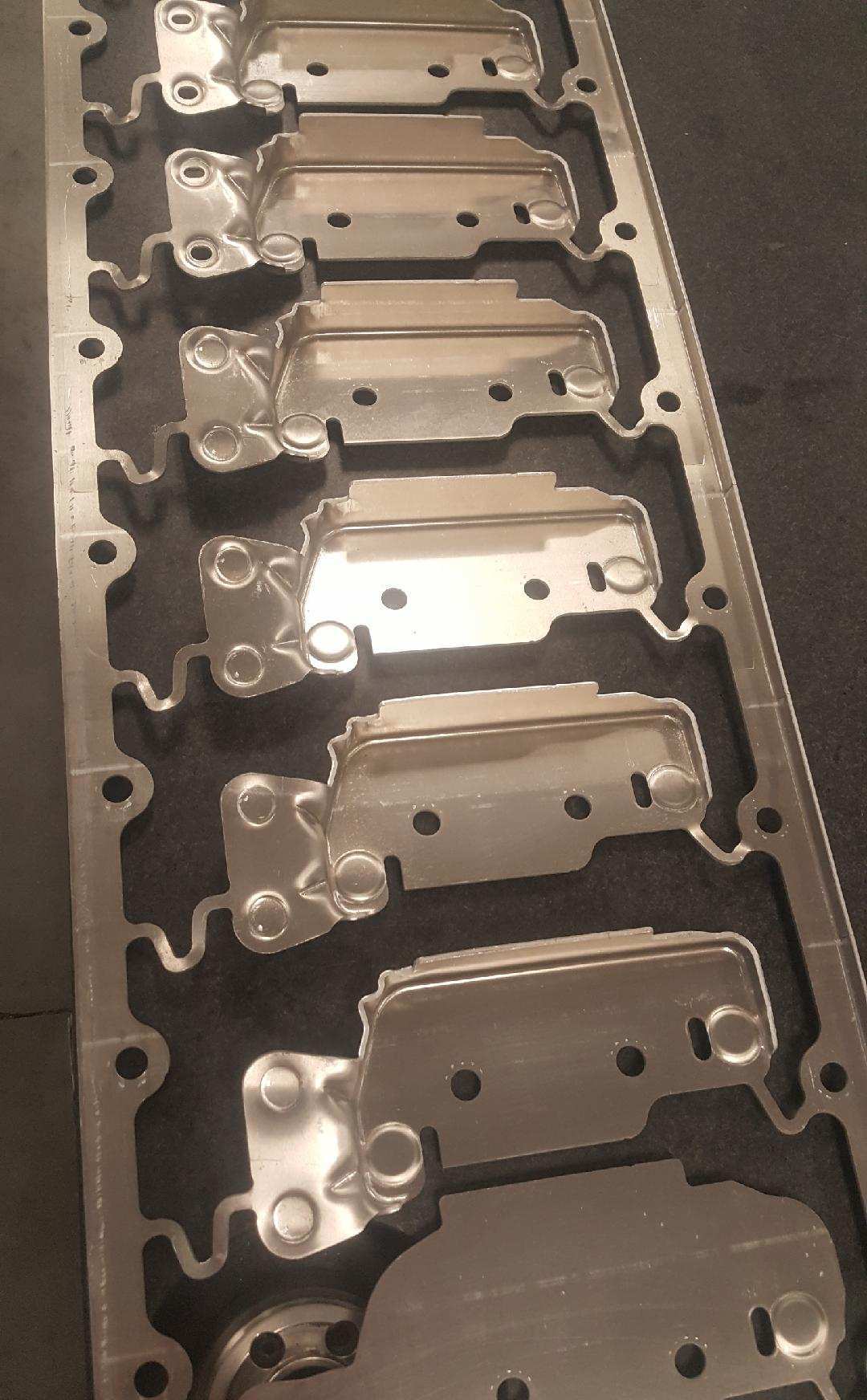Why Metal Stamping is Vital for Producing Long Lasting and Intricate Components
Wiki Article
The Evolution of Steel Stamping Procedures: Developments and Applications
The realm of steel marking processes has actually experienced a transformative journey noted by continuous innovation and adjustment to satisfy the demands of modern-day industrial techniques. From the traditional approaches deeply rooted in history to the cutting-edge innovations driving high-speed precision, the development of steel stamping has actually been nothing except amazing. As new tooling techniques and automation discover their means into this market, the implications for performance and quality are profound. The applications cover throughout a spectrum of sectors, each benefiting distinctively from the innovations in metal marking processes.Typical Metal Stamping Techniques
Standard steel stamping techniques have long been the foundation of making procedures in numerous industries because of their performance and accuracy. The process involves developing a steel sheet or coil into a wanted form by pushing it in between a die and a strike. This approach is extensively used for generating large quantities of get rid of high precision at a rapid pace.One of the essential advantages of traditional metal stamping strategies is the capacity to maintain limited resistances, making certain that each component meets the required specifications regularly. This level of precision is vital in industries such as vehicle, aerospace, and electronics, where even minor deviations can lead to significant concerns.
Furthermore, standard metal stamping strategies supply cost-efficient options for mass manufacturing contrasted to other manufacturing methods. The capacity to mark parts in quick sequence minimizes production time and lowers labor expenses, making it an appealing option for businesses aiming to maximize their manufacturing procedures.
Appearance of High-Speed Stamping

Among the essential benefits of high-speed stamping is its capability to preserve accuracy and consistency also at accelerated handling rates. This precision is critical in markets where tight resistances and intricate styles are called for. Furthermore, high-speed marking allows for the processing of a large range of materials, including light weight aluminum, stainless steel, and copper, additional increasing its applicability across various fields.
In addition, the development of high-speed stamping has actually enabled producers to satisfy the expanding demand for complicated parts in industries such as automobile, aerospace, and electronic devices (Metal Discover More Here Stamping). By leveraging the rate and precision of high-speed stamping innovation, companies can enhance their competitiveness in a quickly advancing market landscape
Advancements in Tooling Technology
With the development of high-speed stamping making it possible for improved accuracy and efficiency in metal creating procedures, the field of metal marking has actually seen considerable developments in tooling innovation. Tooling innovation plays a vital role in steel marking operations, affecting aspects such as product top quality, production rate, and total cost-effectiveness.Moreover, developments in products scientific research have brought about the creation of tooling products with enhanced durability, put on resistance, and thermal conductivity. By using these advanced products, tooling manufacturers can create dies and mold and mildews that endure the high stress and temperatures entailed in metal marking processes, resulting in longer device life and enhanced manufacturing effectiveness. In addition, advancements in device design, such as using simulation software program and additive manufacturing methods, have actually allowed the development of complicated tooling geometries that were formerly challenging to generate. On the whole, these improvements in tooling modern technology have reinvented the steel stamping market, permitting manufacturers to accomplish greater degrees of precision, efficiency, and price savings.
Combination of Automation in Stamping
As automation remains to improve the landscape of metal stamping processes, the integration of automated systems has actually ended up being significantly widespread in modern manufacturing facilities. Automated systems provide various benefits in metal stamping, including increased efficiency, boosted precision, and boosted security. By integrating automation into stamping processes, manufacturers can lower cycle times, decrease product waste, and enhance production throughput.
One of the vital elements of automation in stamping is making use of robot arms for tasks such as material handling, try here part adjustment, and high quality evaluation (Metal Stamping). These robot systems can do repetitive and labor-intensive jobs with speed and accuracy, freeing up human operators to concentrate on even more complex procedures. In addition, automation permits real-time tracking and adjustment of marking processes, causing higher total process control and quality control
Moreover, the integration of automation in marking enables makers to achieve constant component high quality, fulfill limited tolerances, and enhance general productivity. As innovation remains to development, the duty of automation in metal marking processes is expected to broaden better, driving advancement and performance in the manufacturing market.
Applications Across Diverse Industries
Including metal stamping procedures throughout diverse markets showcases the convenience and adaptability of this manufacturing strategy. From automotive to aerospace, electronics to clinical tools, steel stamping plays a critical role in the production of a vast range of elements. In the vehicle sector, steel stamping is more used to produce complex components such as body panels, framework components, and engine get rid of high precision and effectiveness. The aerospace market relies upon steel marking for manufacturing light-weight yet resilient parts for aircraft and spacecraft. In the electronics industry, metal stamping is vital for creating adapters, calls, and various other tiny get rid of limited resistances. Clinical gadget makers make use of steel marking for developing exact parts like medical instruments and implants. Furthermore, the appliance market gain from metal stamping procedures to make components for fridges, washing devices, and various other home appliances. The adaptability of steel marking processes makes it an important manufacturing strategy throughout different industries, demonstrating its importance in contemporary production processes.Verdict

Report this wiki page